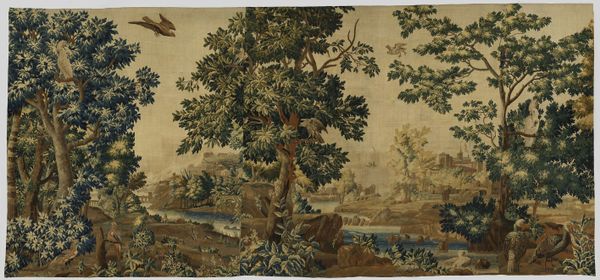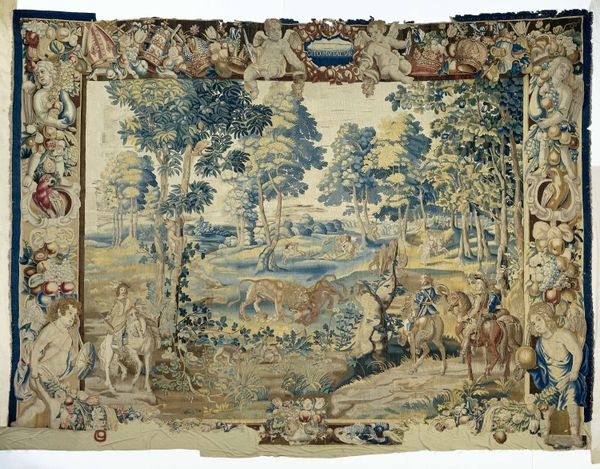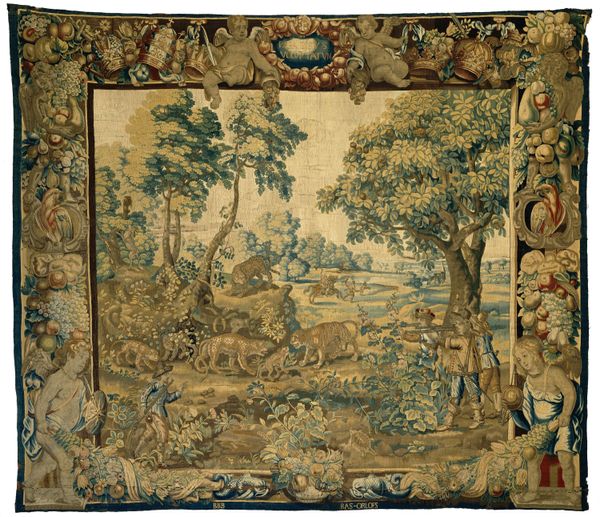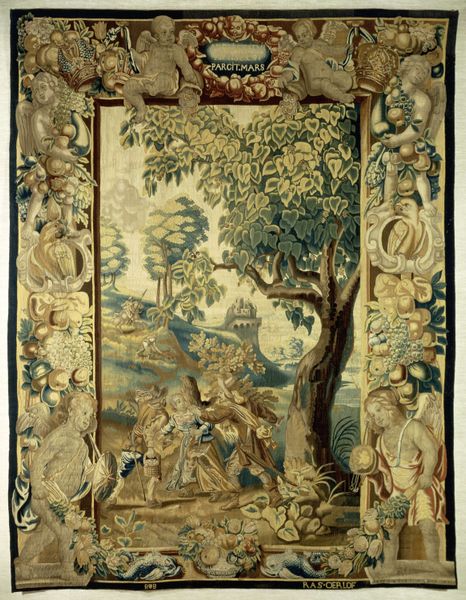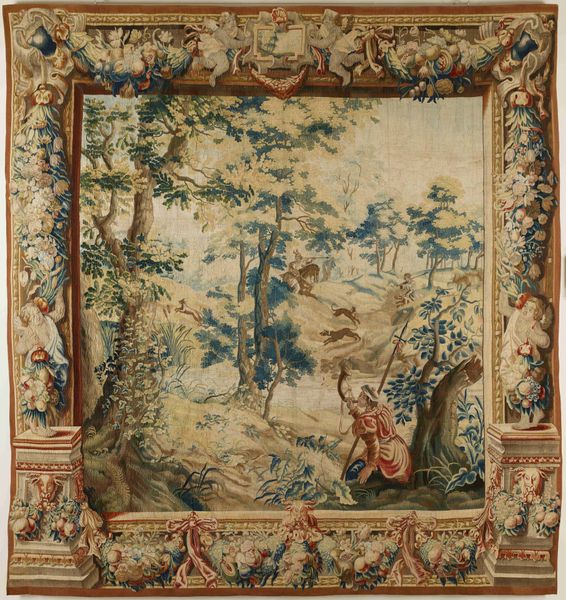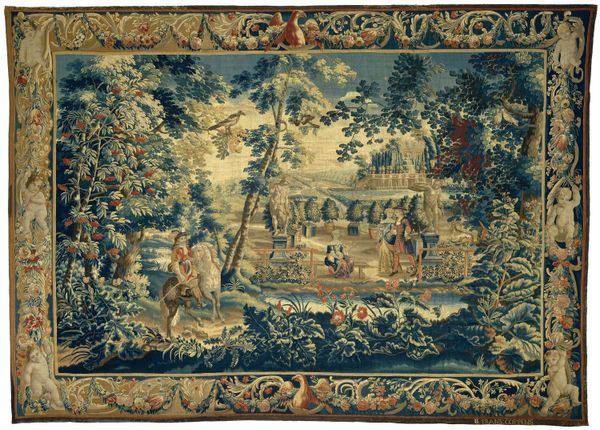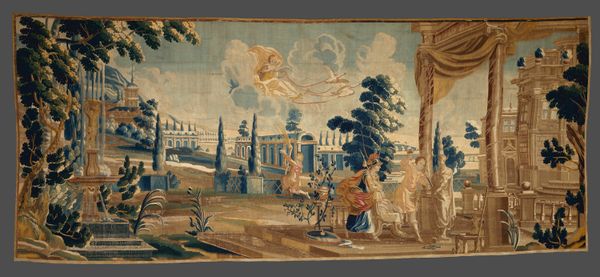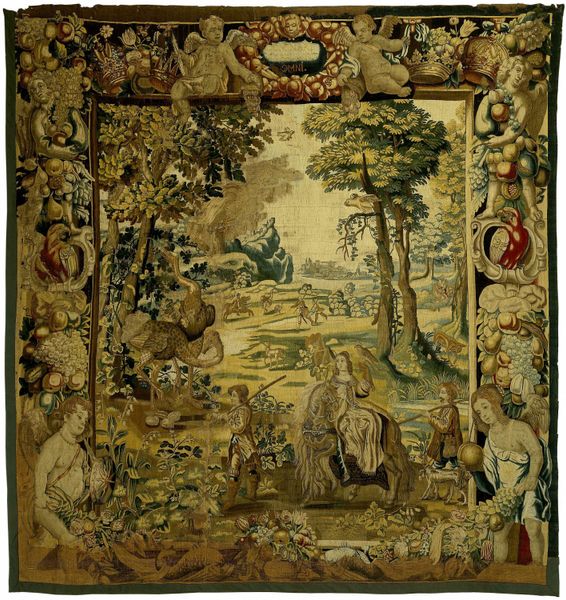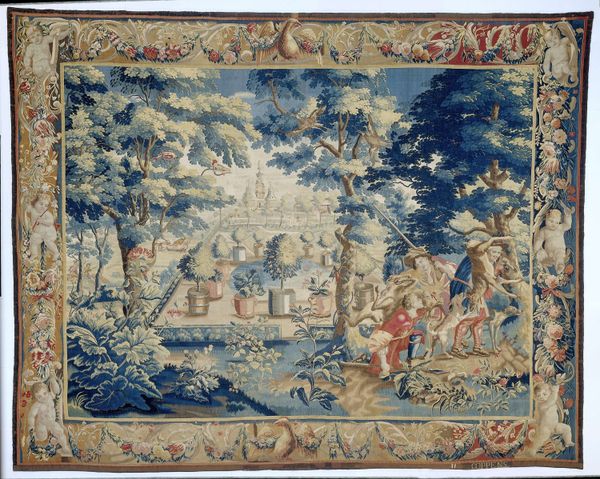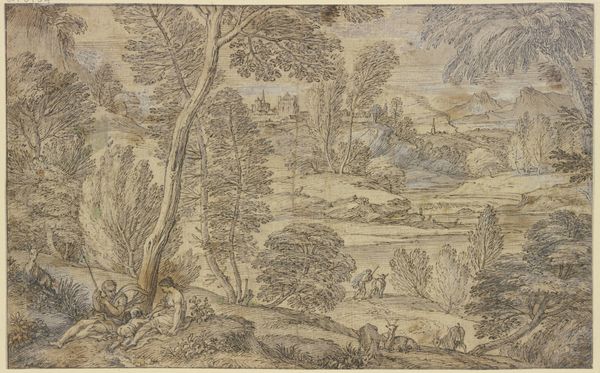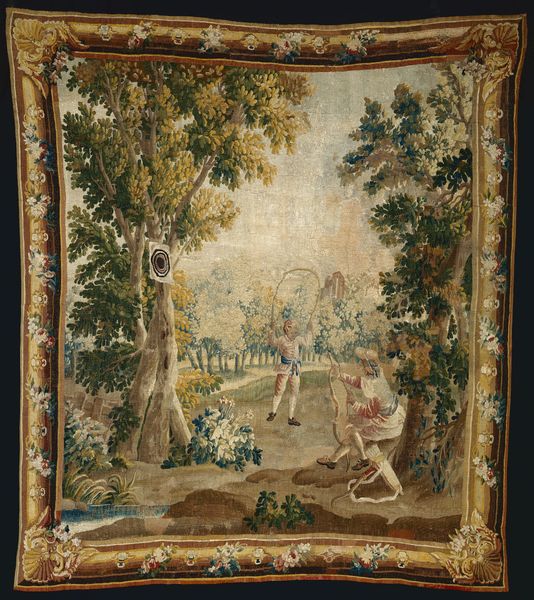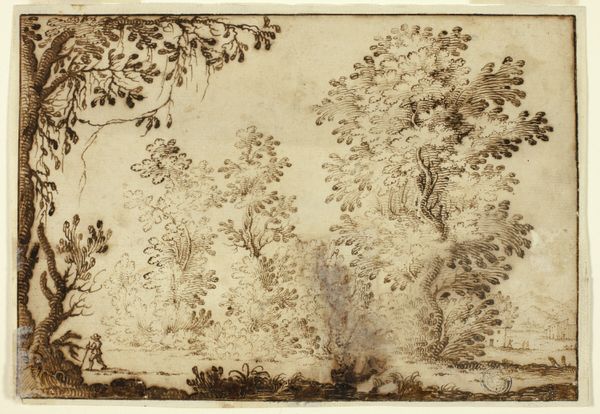
En bos- en riviergezicht met vogels, een fontein en een grafmonument c. 1700 - 1730
0:00
0:00
weaving, textile
#
allegory
#
baroque
#
weaving
#
landscape
#
textile
#
mixed media
Dimensions: height 338.0 cm, width 840.0 cm
Copyright: Rijks Museum: Open Domain
Alexander Baert produced this large tapestry sometime between 1680 and 1719, though the precise date is not known. It offers us insight into the cultural values of the Dutch Republic, and how these were changing. We see an idealised landscape, complete with classical statues, a fountain and even a tomb. This is a garden of earthly delights, but it is also, perhaps, a reminder of mortality, and of the passing of time. Landscapes had long been popular in Dutch art, but they were increasingly being used not just to depict the world, but to comment on the social structures of the time. The Dutch Republic was a mercantile nation, and some artists were critical of the way wealth was being accumulated, and of its unequal distribution. This tapestry, with its emphasis on leisure and luxury, may be an example of that. To understand this work better, we can research the changing status of landscape art in the Netherlands at the time. We might also look at how the Dutch Republic was represented in art and literature more generally.
Comments
No comments
Be the first to comment and join the conversation on the ultimate creative platform.
